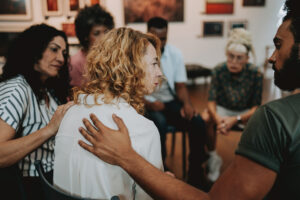When parents first learn that their child may have a genetic disorder, it can feel overwhelming. There’s fear, confusion, and an urgent need to understand what comes next. In these moments, advocacy organizations often become essential partners, offering guidance, emotional support, and access to practical tools that help families move forward with confidence.
Whether it’s helping to understand medical reports, finding specialists, or connecting with other families going through similar challenges, these organizations provide a critical bridge between diagnosis and care.
What Do Advocacy Organizations Do?
Advocacy organizations are nonprofits or community groups focused on improving the lives of individuals and families affected by specific conditions. In the world of genetic disorders, they serve as a compass for families navigating unfamiliar terrain.
Here’s what they typically offer:
- Education: Reliable, easy-to-understand information about rare or genetic conditions. Some groups maintain libraries of translated materials for families who speak languages other than English.
- Navigation Support: Help understanding medical rights, school accommodations under the IDEA Act, how to access genetic testing, and which specialists to see.
- Family Support Services: Peer support groups (online and in-person), counseling referrals, and community events that reduce isolation.
- Policy and Research Advocacy: Many groups push for better laws, increased research funding, and expanded newborn screening panels.
Real Services You Can Access
Here’s a closer look at what working with an advocacy organization might look like in practice:
1. Genetic Testing Assistance
Some organizations offer programs that help families qualify for no-cost or low-cost genetic testing. The process may include:
- Filling out an application form
- Submitting a referral or letter from a physician
- Meeting certain income-based or diagnostic criteria
These programs can be a financial lifeline for families without adequate insurance.
2. Care Coordination Help
Groups such as the National Organization for Rare Disorders (NORD) offer rare disease navigators – specialists who guide parents through appointments, insurance paperwork, and locating clinical trials or specialists in their area.
3. Education and Advocacy Toolkits
Organizations often provide downloadable toolkits that help parents communicate effectively with schools, medical providers, and insurance companies. These include templates for IEP (Individualized Education Program) requests, sample appeal letters, and care planning worksheets.
A Lifeline Through Community and Connection
One of the most powerful aspects of advocacy groups is their ability to connect families. Whether through private Facebook groups or local meetups, these communities provide essential support and a sense of belonging, offering:
- A safe space to vent, ask questions, and share experiences
- Referrals to trusted providers or specialists
- Emotional validation from others who truly understand
Barriers Families Still Face
While these organizations provide invaluable support, not all families benefit equally. There are still significant barriers to access:
- Cultural and Language Differences: Families from immigrant backgrounds or those who don’t speak English fluently may struggle to access services. While some organizations offer translated materials, this isn’t universal.
- Technology Gaps: A growing number of support services are offered online, but families in rural areas or those without reliable internet access may be left out.
- Financial Limitations: Many families affected by rare genetic conditions already face high out-of-pocket medical costs. Even with nonprofit assistance, services like travel to specialist centers or therapies may remain out of reach.
- Lack of Local Support: While national advocacy groups do excellent work, many communities still lack local chapters or region-specific resources, making it harder for parents to get hands-on help.
Driving Change at a System Level
Beyond one-on-one support, many advocacy groups fight for long-term change. For example:
- Cure SMA played a key role in adding spinal muscular atrophy (SMA) to state newborn screening panels.
- March of Dimes advocates for expanded maternal and infant health protections.
- EveryLife Foundation works to secure federal funding for rare disease research.
Their collective voice helps shape policies that benefit not just individual families but entire generations of children with genetic conditions.
Advocacy organizations are more than support groups – they are engines of change, community builders, and trusted guides for families facing the complexities of genetic disorders. They bring light to a journey that can feel dark and uncertain, helping parents become informed advocates for their children.
From making sense of a diagnosis to accessing essential services, these organizations stand beside families every step of the way. And while challenges like language barriers, funding limitations, and healthcare gaps remain, advocacy groups continue to work tirelessly to close those gaps and create a more inclusive, informed, and compassionate support system.
A genetic diagnosis can bring emotional challenges, but reaching out to an advocacy group can help families feel supported and empowered.



